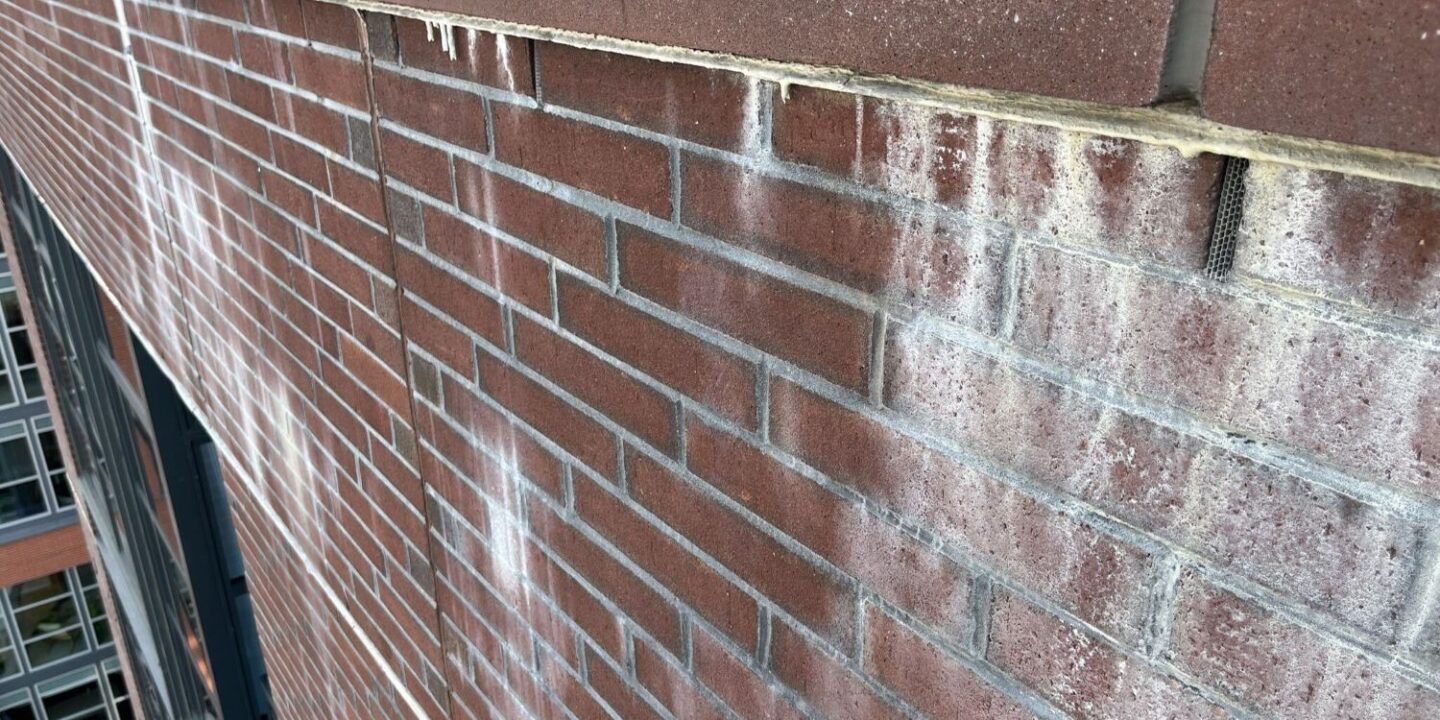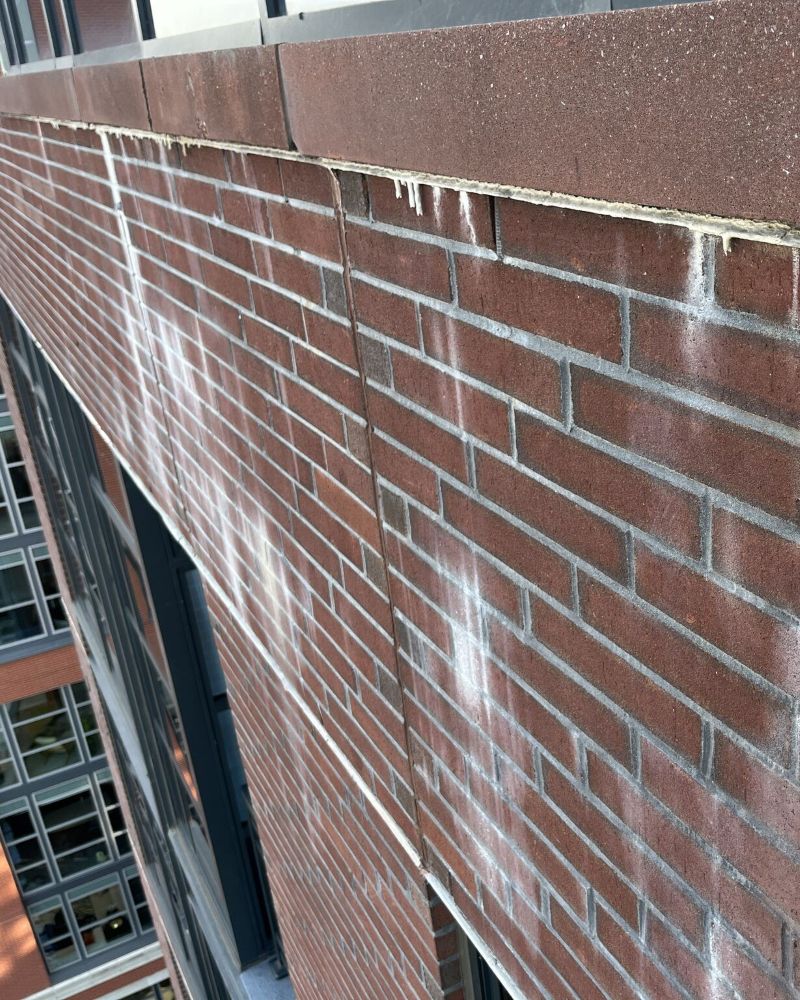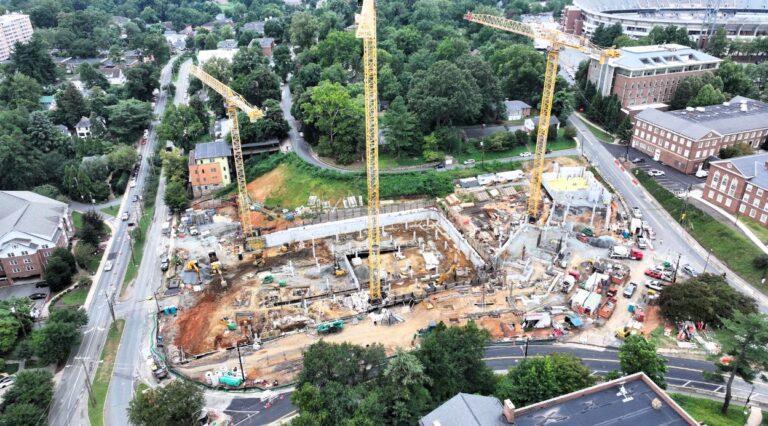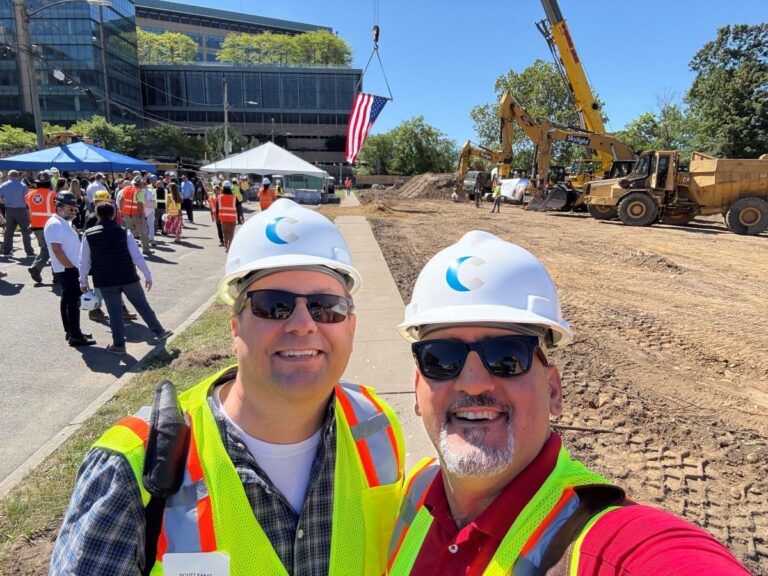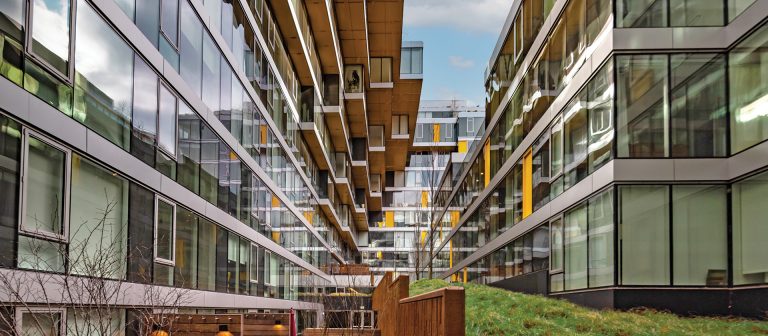An Engineering Insight authored by SK&A Principal Justin Long, PE, RBEC, BECxP. Follow Justin on Linked In.
I am often asked, “What is that white, powdery residue on my facade? Should I be concerned? How do I deal with it?” Efflorescence is a crystalline deposit of salts that form on the surface of masonry or concrete when water-soluble salts migrate to the surface as moisture travels through the material and then evaporates, leaving the salt deposits behind. While not a structural issue, it can indicate underlying moisture problems which could lead to:
- Accelerated degradation of concrete or masonry over time.
- Potential for more serious issues like freeze-thaw damage.
- Aesthetic concerns, especially on prominent building facades.
Managing efflorescence involves addressing both the materials and the sources of moisture:
- Identify & Eliminate Water Sources: Ensure proper drainage, fix leaks, and reduce moisture exposure.
- Surface Cleaning: Light deposits can often be removed with dry brushing, while heavier buildup may require specialized cleaners.
- Surface Treatments: Applying a water-repellent surface treatment can help prevent future moisture intrusion.
- Material Selection & Installation Techniques: Use of low-salt materials and moisture barriers along with proper material selection & detailing at areas with high exposure to moisture.
Efflorescence can be unsightly, but it should not be ignored. With proactive measures, it’s possible to mitigate its effects and protect from further degradation & damage.
This insight was originally published by Justin Long, PE, RBEC, BECxP, on Linked In. View the original post and add your own comments.
